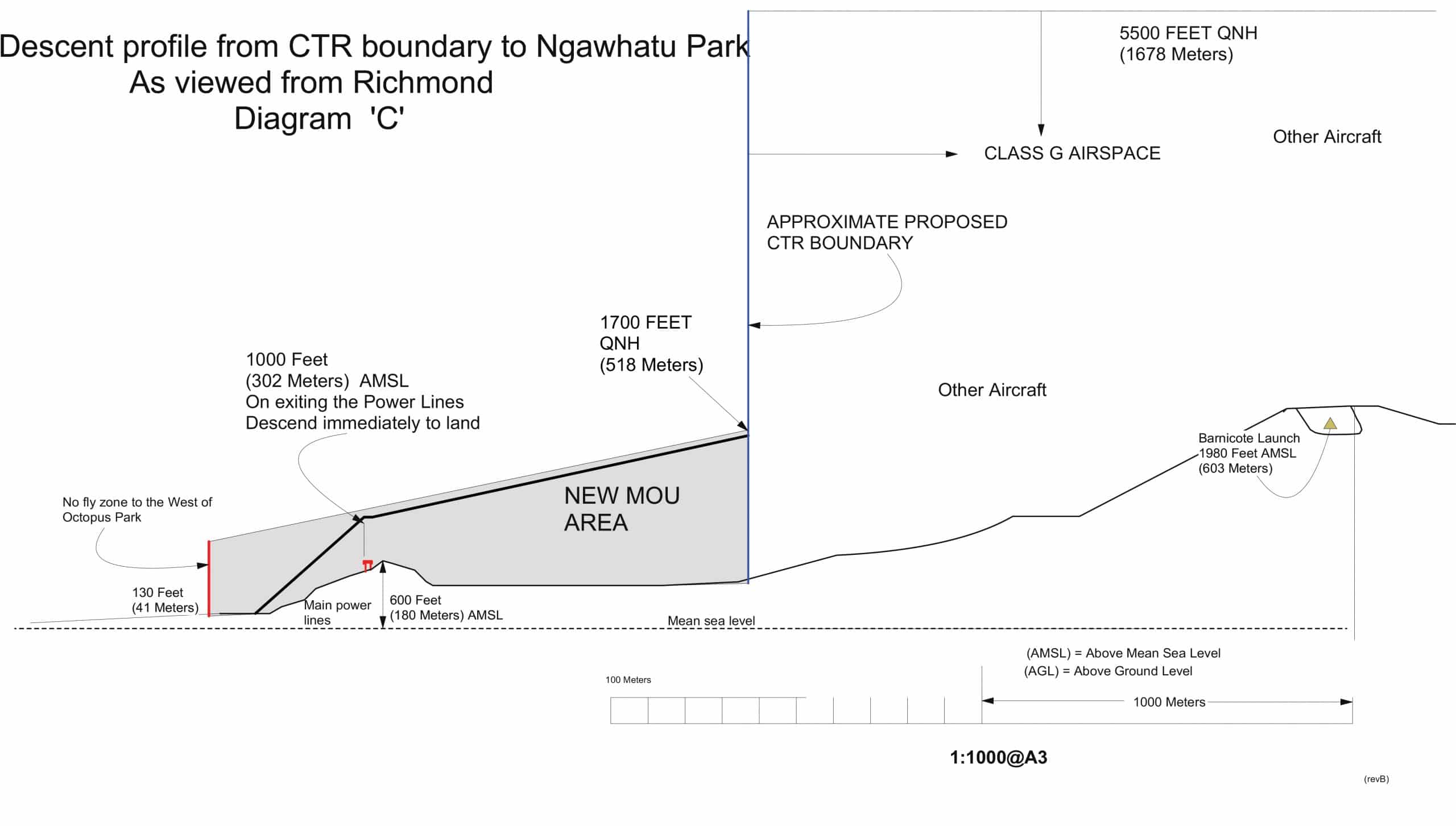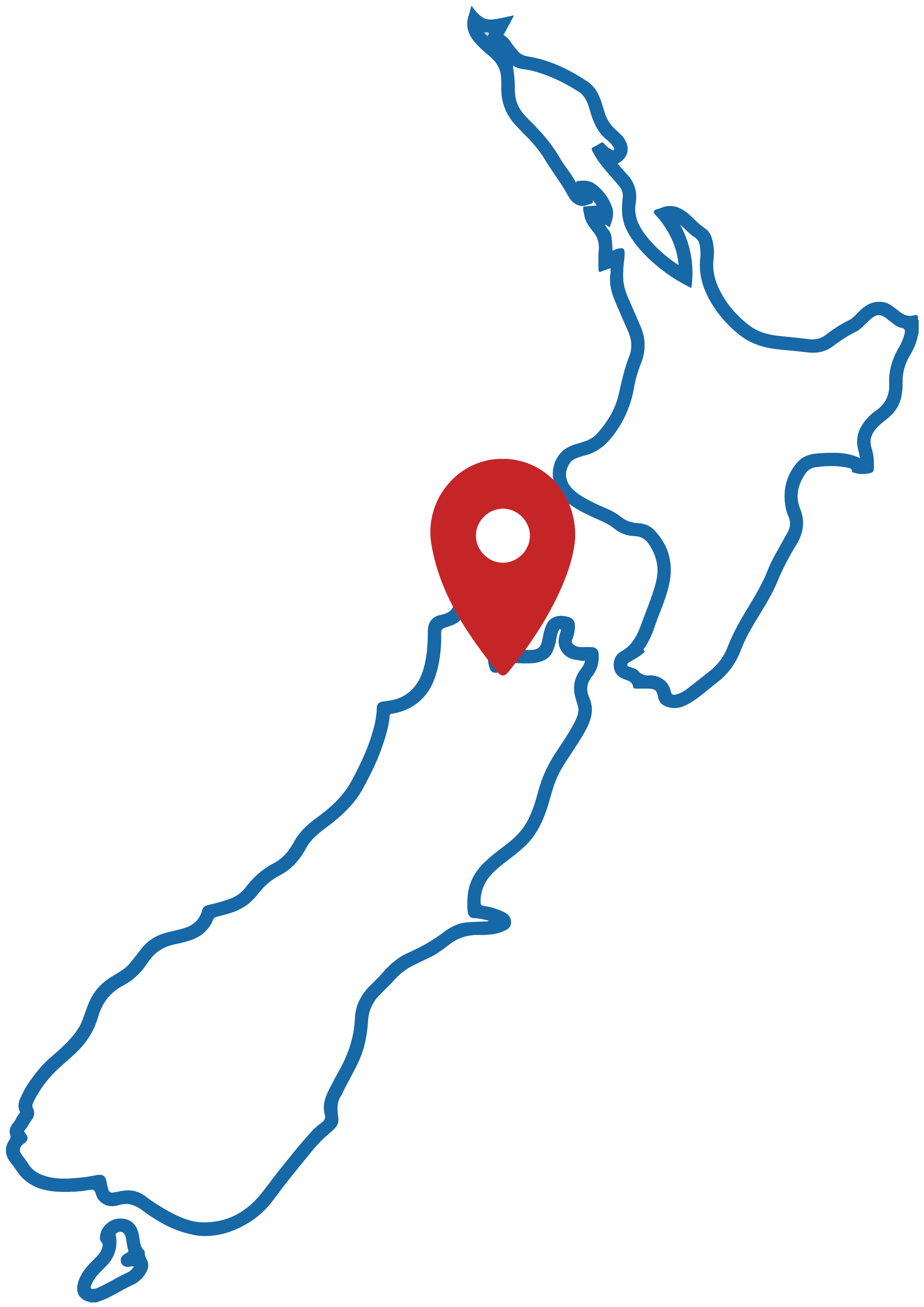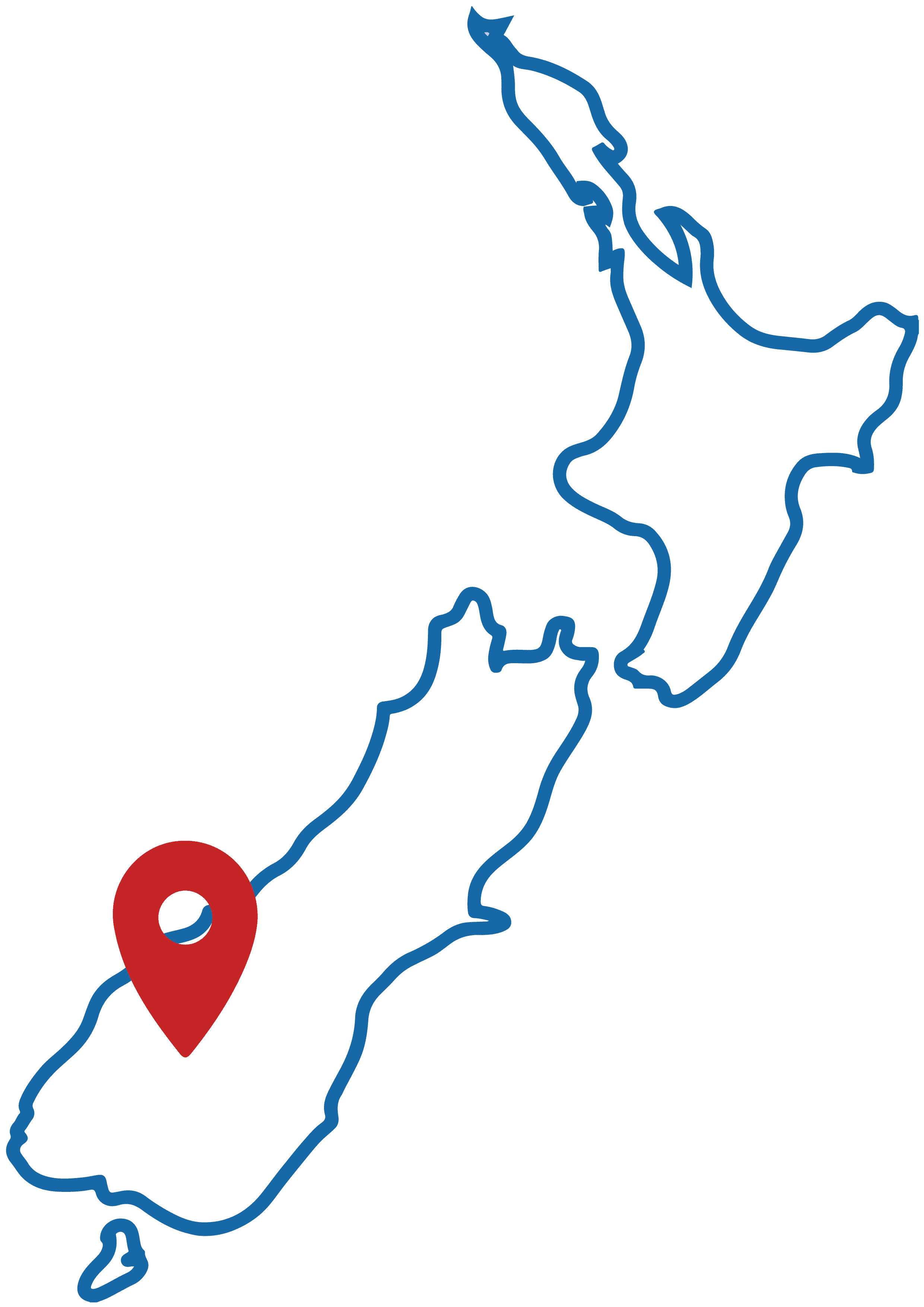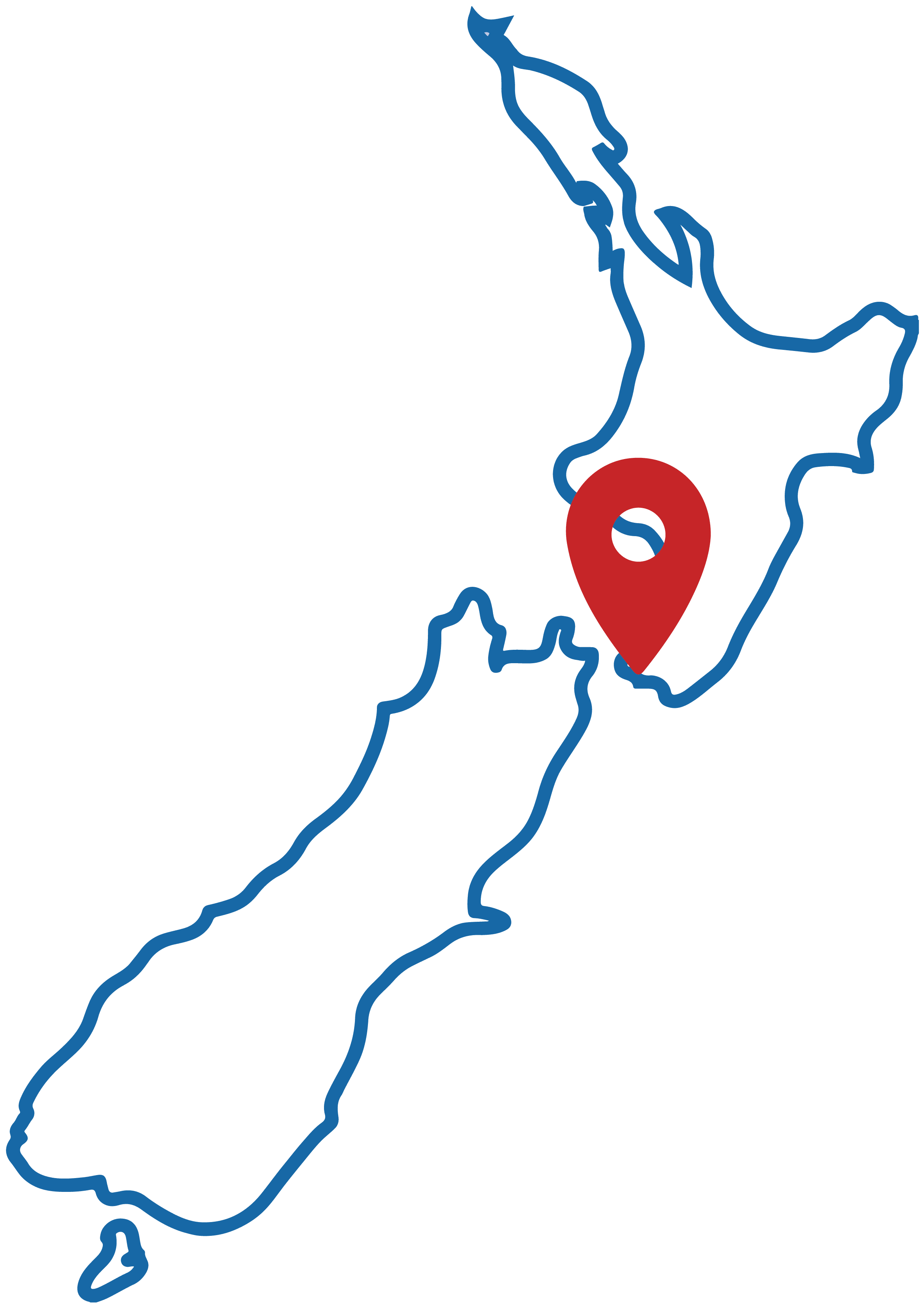Site Inductions
Flying in Barnicoat
The flying in Barnicoat Induction covers the procedures for flights from Barnicoat, the Stoke Hills area and landings at Ngawhatu Park (a.k.a. Octopus Park). Saxton field landing has its own separate MoU and Induction. Contact a club official for details.
Queenstown Gondola
It’s important that you don’t fly without being accredited. The skyline gondola flying site requires a special permit/accreditation in accordance with a Memorandum of Understanding (MOU) between the Southern Hang gliding and Paragliding Club & Airways Corp.
Flying in Wellington
The Wellington Hang Gliding & Paragliding Club has a Special Access Permit with Greater Wellington Regional Council to access flying sites at Baring Head, Mt Climie, Battle Hill and Whitireia Park. Members of the NZHGPA are required annually to fulfill the requirements and declaration.
Barnicoat Site Briefing and Induction
This Induction covers the procedures for flights from Barnicoat, the Stoke Hills area and landings at Ngawhatu Park (a.k.a. Octopus Park).
Saxton field landing has its own separate MoU and Induction. Contact a club official for details.
Changes to the Nelson airspace effective 8 November 2018 have new boundaries and procedures. All pilots flying from Barnicoat launch or in this area must complete this Site Briefing & Induction form. Any past inductions are no longer valid.
The induction and declaration can be done online using the password Barnicoat remember this password to access online at; Barnicoat Induction Form. You can contact a senior club member (Contacts here Local Clubs) to do the induction test in person, a charge of $25 applies and is to be paid to the person who inducts you.
Standard procedures on launch – all pilots (Refer to Map A below)
- Ring the Tower and request ‘Stoke hills area’ to be opened until …..(time). The phone number is on the notice board on launch, 03 547 9799 Ext 9 (we suggest saving the number to your phone). Note the Stoke Hills area is ONLY to be used to transit the control zone on a continuous descent to landing.
- If you have opened the airspace to ‘Stoke hills area’ write the time it is open to on the notice board.
- IF airspace to ‘Stoke hills area’ is not available, you must stay out of controlled airspace. Write nothing on the notice board and if you fly stay out of the control zone. i.e landings must be east of the line marked CTR boundary on Map A.
- Pilots arriving after other gliders are already flying must check to see if the airspace out to the park is open (time will be written on the notice board). If it is not open then either; fly and stay clear of airspace ( 3 above) or open up airspace and write the time up on the notice board ( 1 above). Update all flying pilots by radio.

Control Zone Line Visual Points ( Refer to Map B attached below)
The Control (CTR) zone boundary runs just to the west of the fire lookout, then to the western side of the Hay Paddock, then to the water tank (eastern one), then onto Quail Rise/Marsden road intersection, then to the Grampians mast. The Hay Paddock and bomb out landing are in uncontrolled airspace and can be used when Stoke Hills area is not open. These are only the main markers where we are often flying so familiarise yourself with the visual points both north and south of those given. See Maps ‘A & B’.
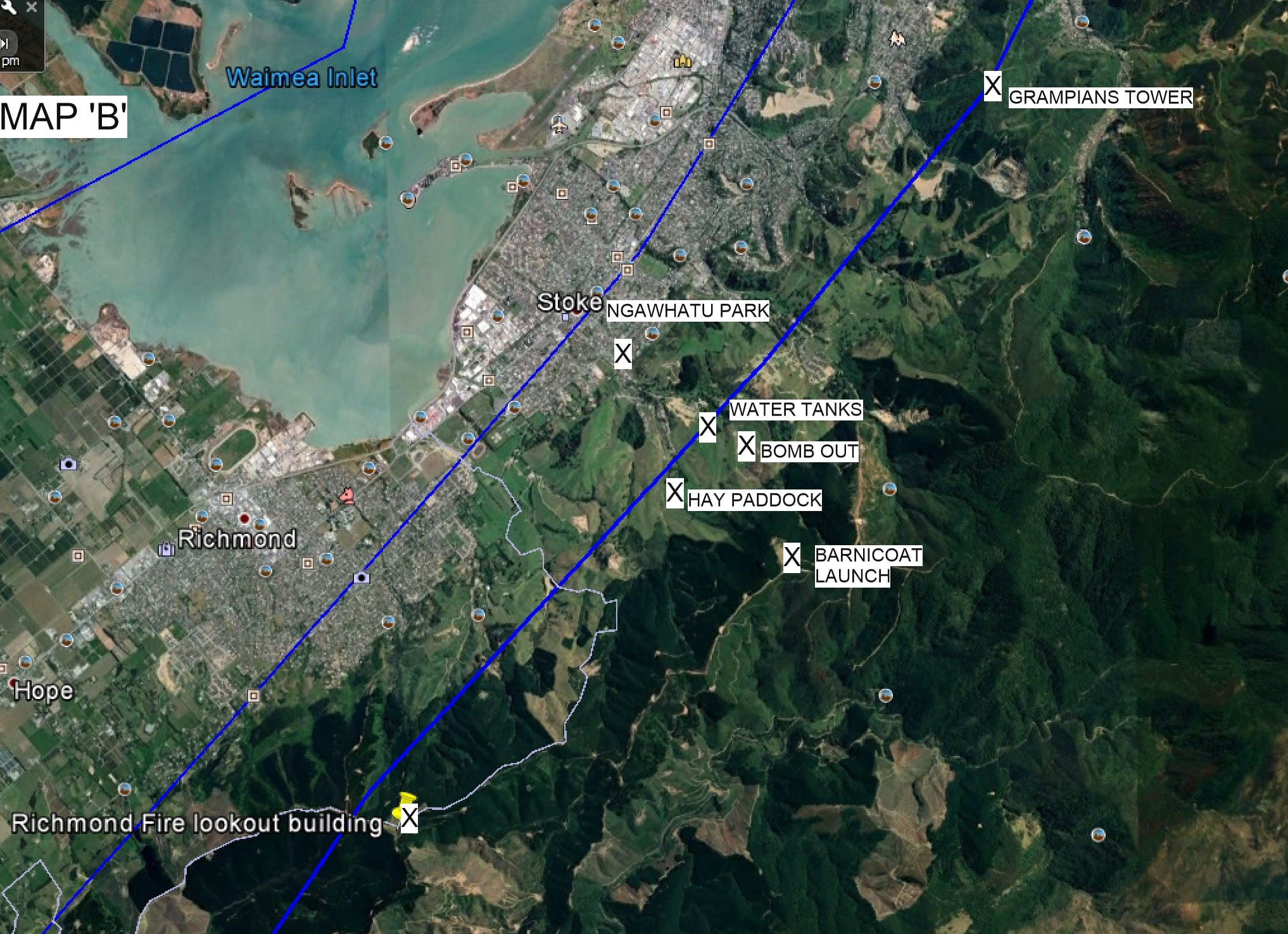
Barnicoat flying area safety
‘Barnicoat flying area’ is suitable for PG2 pilots in appropriate weather.
This is the area north west of the ridge line from Jenkins Hill to the Fire Lookout west out to the edge of the CTR boundary, from the surface to 5500 feet, and when open, out to the landing at Ngawhatu Park (Octy or Octopus Park).
Barnicoat XC
- Flying northeast, southwest and east of the main Barnicoat ridge line is rated for PG3 or PG2 pilots +100 hours and or Hang gliding Intermediate +100 hours or above.
- You must be flying with a GPS and UHF radio.
- Look at airspace closely and be familiar with it before flying this area.
- Landings are small and there are not that many available in some areas.
- Wind changes of 180° have been experienced in the valleys.
- Cell phone coverage is minimal.
Note: While in the past we flew in controlled airspace (class C) with the consent of ATC we are now mostly flying in uncontrolled airspace (class G). We need to be aware of:
- other aircraft, including UAV’s.
- the CTR boundary will be enforced, there is the potential for a conviction if infringing airspace.
- VFR meterological conditions.
Barnicoat Induction Information & MoU Extract
4. CLUB GLIDER OPERATIONS SEE MAPS ‘A & B’ AND DIAGRAM ‘C’ .
4.1 Operations within controlled airspace shall only take place within the Stoke Hills Area as defined in the MoU and in the Site Briefing & Induction). The Stoke Hills Area shall only be used to transit controlled airspace on continuous descent to land.
4.2 The Club shall be responsible for the training and briefing of all club members; · on the conditions of this agreement · that other aircraft may fly adjacent to or through the Stoke Hills Area without updated traffic information being provided · That UAVs may fly adjacent to or through the Southern portion of the Stoke Hills Area, or adjacent to the Northern portion of the Stoke Hills Area, without updated traffic information being provided · that traffic information will not be issued by NS Tower to Club pilots regarding other Club pilots · that aircraft will operate in a circuit pattern to the east of Nelson aerodrome as close as Main Road Stoke (adjacent to Octopus Park) · Visual flight rules apply with respect to clearance from cloud.
4.3 As Club gliders are NORDO (non radio-equipped), the Club accept that other aircraft may operate within or close to the Stoke Hills area and shall ensure that all glider pilots are aware of this and of their responsibility to maintain situational awareness in relation to other aircraft or Club pilots, which may be operating in the Stoke Hills Area.
4.4 As Club gliders are NORDO, the Club accept that UAV’s may operate within or close to the Southern portion of the Stoke hills area and shall ensure that all glider pilots are aware of this and their responsibility to maintain situational awareness in relation to UAV’s, which may be operating in the Stoke Hills Area.
4.5 The Northern portion of the Stoke Hills Area also shares the same airspace as the NZNS Part 101 ‘no-ops’ area. The Club accept that UAV’s may at times be operating up to 200 feet AGL in the ‘No-ops’ area within 4 km of Nelson Aerodrome. UAV’s and Part 106 operations are not able to operate in the Part 101 ‘no-ops’ area at the same time. This will entail opening the area to either UAV’s or paragliders/hang gliders, but not both. Although NS TWR may attempt to negotiate times to suit both parties, the airspace will generally be applied on a ‘first in first served basis’.
4.6 The Club will be responsible for ensuring that UHF radios are suitable for purpose and provide NS Tower with at least one serviceable UHF radio with charger and the appropriate frequency to be used. Ch.34 (477.250) CTSS 123.0
4.7 The following meteorological minima apply for Barnicoat operations, if conditions fall below these limits Club pilots shall land and advise NS Tower. · Minimum visibility – 5km · Minimum cloud base – 3000ft AMSL and no cloud within the Barnicoat area below the launch site that would affect NS Tower sighting gliders.
4.8 All Hang Gliders and Paragliders shall comply with CAR Part 106 5.
CLUB PILOT RESPONSIBILITIES
5.1 Prior to any operations, the Club on behalf of the pilots shall request approval to operate within the ‘Stoke Hills Area’ by telephone. This request shall include the time when operations will commence and cease. THE NELSON CONTROL TOWERS PHONE NUMBER IS ON THE NOTICE BOARD AT LAUNCH. (03 5479799 EXT 9)
5.2 For the intention of landing at Octopus Park (Ngawhatu), Club pilots may leave the Stoke Hills Area by crossing to the west of the main transmission lines, immediately adjacent to Octopus Park, at or below 1000ft AMSL on continuous descent to land. Pilots shall not fly West of Octopus Park at any time.
5.3 When an instruction is issued by NS Tower for early deactivation, via the UHF radio, all pilots are to land within 10 minutes. E.g. ‘All stations Nelson Tower closing Stoke Hills Area, phone the tower when all gliders are on the ground’. The Club is to phone NS Tower as soon as all club gliders are on the ground.
5.4 The Club shall ensure that all pilots are aware of the approval expiry time and shall cease all gliding operations at or before that time.
5.5 All pilots shall carry a correctly set altimeter and UHF radio.
THE HEIGHT OF BARNICOAT LAUNCH IS 1980 feet (603 METERS)
Pilots must be at or below 1700 feet at the CTR boundary and then in descent to be at or below 1000‘ crossing the main power pylons. See Diagram C below!
